Happy holidays to every -nut

.
I'll celebrate with good DCV results on my 3458B so far. After ADC replacement, ran SN18 test for few days, to confirm board normal function.
Then 5 days meter calibrated to 10.0000V using DC standard. CAL passed w/o issues, so time to rerun SN18 with correct gain and get some initial 10V data to look at.
CAL? 72 monitoring:
| Date/time | Meter temperature | CAL? 72 | CAL? 1,1 | CAL? 2,1 | Deviation, ppm |
| 21.DEC.2016 09:06 | 35.5 | 983.331695E-03 | 39.9991607E+03 | 7.07037491 | Reference, 0.00 |
| 21.DEC.2016 20:48 | 36.2 | 983.331710E-03 | +0.0153 (+0.0153) |
| 22.DEC.2016 08:26 | 36.2 | 983.331676E-03 | -0.0346 (-0.0193) |
| 23.DEC.2016 00:52 | 35.6 | 983.331701E-03 | +0.0254 (+0.0061) |
| 23.DEC.2016 08:30 | 36.0 | 983.331641E-03 | -0.0610 (-0.0549) |
| 24.DEC.2016 17:42 | 36.2 | 983.331664E-03 | +0.0234 (-0.0315) |
| 24.DEC.2016 18:16 | 36.1 | 983.331626E-03 | -0.0386 (-0.0702) |
| 24.DEC.2016 23:21 | 35.5 | 983.331697E-03 | +0.0722 (+0.0020) |
| 25.DEC.2016 16:45 | 36.6 | 983.331594E-03 | -0.1047 (-0.1027) |
So far looking good, stable and behaving. 10V reading stable within 0.1ppm over 10 minutes (transfer spec) and indeed stable better than 0.3 ppm window over >24 hours (24h is 0.55ppm spec).
Room is airconditioned, so to make test more challenging, there are temperature oscillations below 1C. Still meter shows good enough data.

10V datalog:
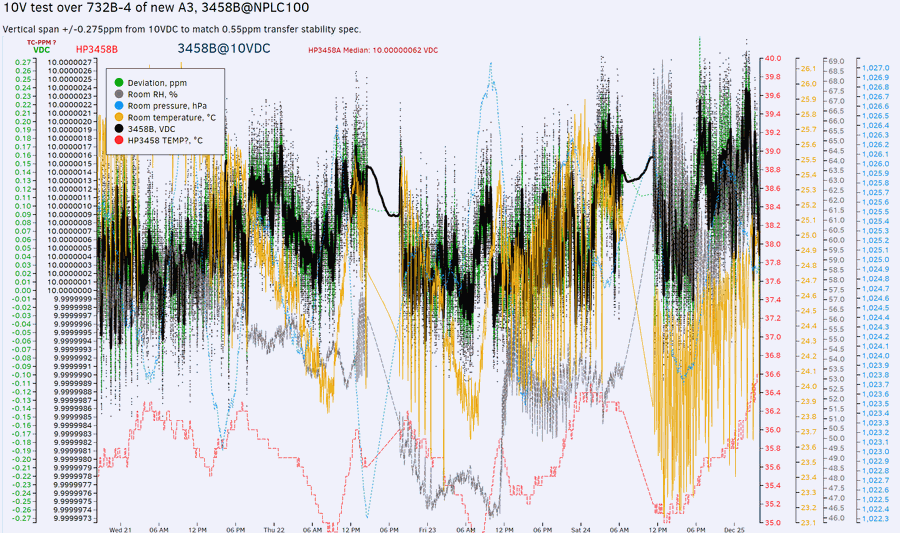 Live data (may take a while to draw plot, many pointsRAW 10V from 732B Data
Live data (may take a while to draw plot, many pointsRAW 10V from 732B Data for those who feel bored during holiday...
And you see this only on EEVBlog (well, and xDevs.com

- how the 16 week 2016 year 3458A A3 board looks like today..
Perhaps all new 3458A from Keysight have this version of board now.
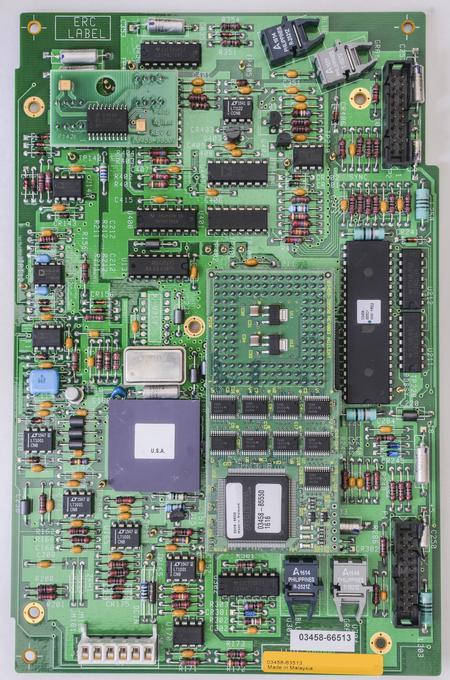
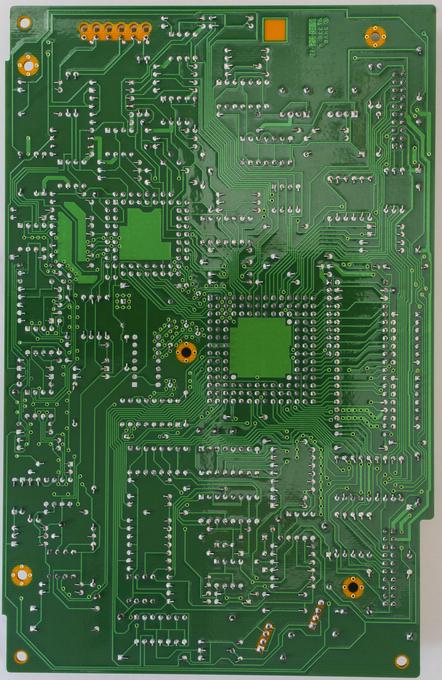
Old gate array logic chip is now replaced with a patch PCB, with ALTERA MAX CPLD in TQFP144, some 245 bus transievers and few LDOs. Transievers are due to conversion of 3.3V CMOS levels into 5V TTL for rest of the A3. More parts get obsolete - more patch boards we see..
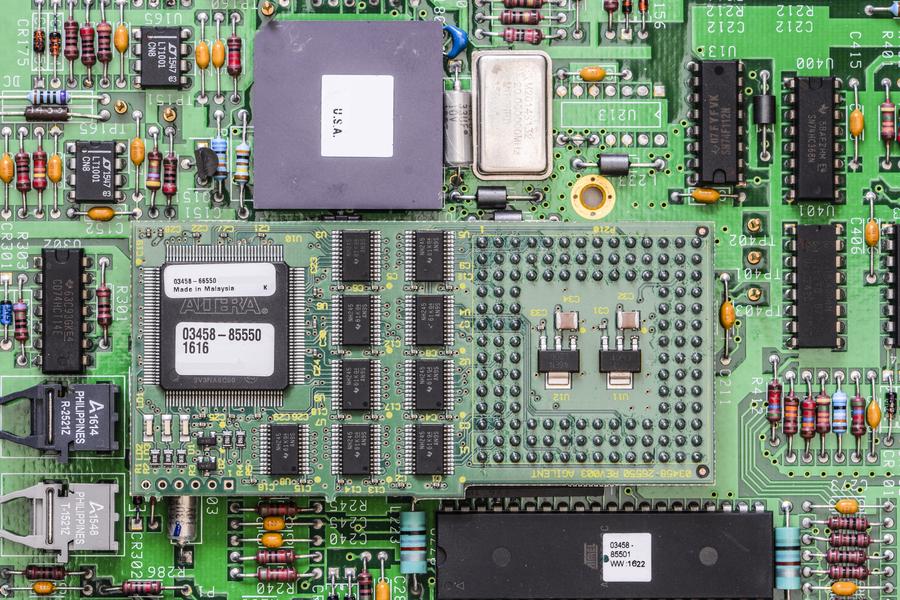
I cooked little comparison table of common 3458A A3 PCBA versions:
| A3 PCBA Version SKU | 03458-66503 Rev.A | 03458-66503 Rev.C | 03458-66503 Rev.D | 03458-66513 Rev.A | 03458-66513 Rev.B |
| Board photograph | 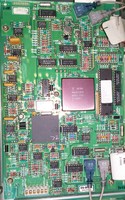 | 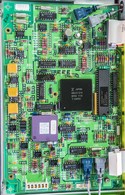 | 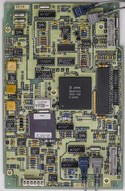 | 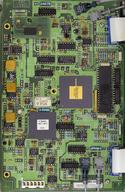 | 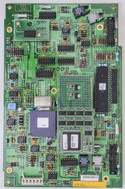 |
| First released | 1988 | 1989 | ~1995 | 2000 | 2015 |
| U180 Hybrid | Same package and footprint | Same package and footprint | Same package and footprint | Same package and footprint | Same package and footprint |
| Interface MCU 8051 | Mask 03458-85501 | Mask 03458-85501 | Mask 03458-85501 | Rev.2 Mask , Intel 8051 | Rev.2 Mask , ATMEL 8051 |
| U210 Gate array ASIC | Fujutsu MB651314 PGA | Fujutsu MB651314 PGA | Fujutsu MB651314 PGA | HP 1820-5770 Orbit 6968A PGA | Patch PCB 03458-26550 with ALTERA CPLD |
| Optical interface | HP 1005-0097/HP-1005-0096 | HP 1005-0097/HP-1005-0096 | HP 1005-0097/HP-1005-0096 | Avago HFBR-2521Z/Avago HFBR-1521Z | Avago HFBR-2521Z/Avago HFBR-1521Z |
| Integrating cap | MLCC 50V | 50V black plastic NP0 | 50V black plastic NP0 | yellow coated MLCC | yellow coated MLCC |
| U213 position | 74F112PC | HP 1820-2924 IC | Jumper pin 8 - pin 10 | Jumper pin 8 - pin 10 | Jumper pin 8 - pin 10 |
| ADC U142/U405 comparator | EL2018CN DIP8 (HP 1826-1817) | EL2018CN DIP8 (HP 1826-1817) | EL2018CN DIP8 (HP 1826-1817) | Patch PCB 03458-66530 with EL2251CM | Patch PCB 03458-66530 with EL2251CM |
| U404 ramp opamp | Hermetic LF400C | Plastic LT1122 | Plastic LT1122 | Plastic LT1122 | Plastic LT1122 |
| C401,Q402 | Hermetic metal can | Plastic | Plastic | Plastic | Plastic |
| C146,C147 capacitors | None | Present | Present | Present | Present |